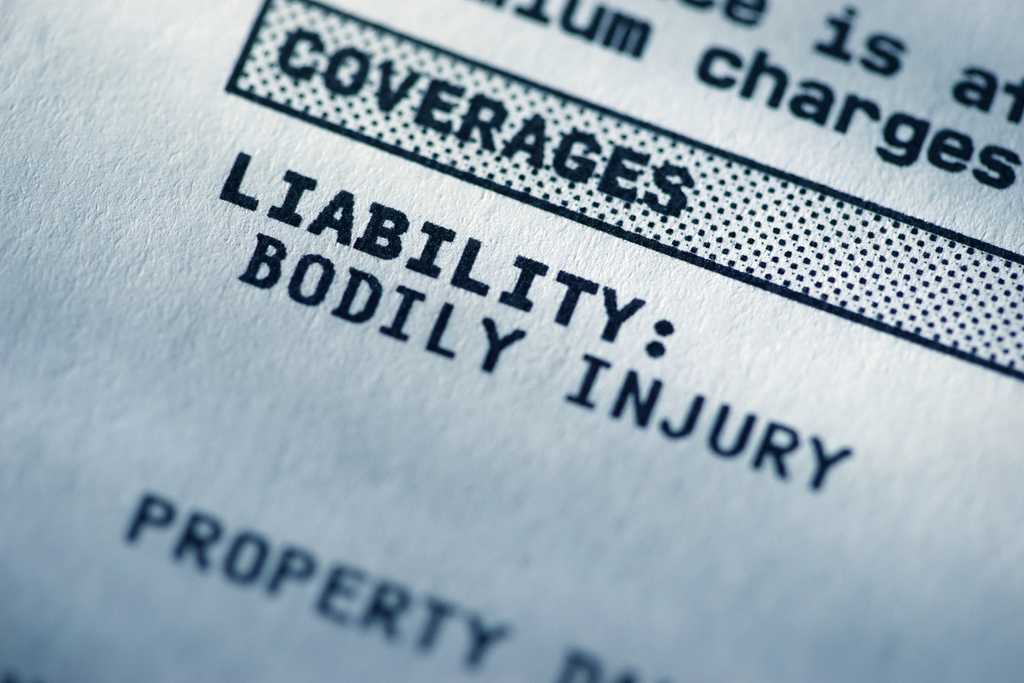Liability is one of the essential coverages on your car insurance policy. If you’re responsible (liable) for an accident that injures another driver or damages their vehicle, your liability coverage would ensure they receive reimbursement for medical care and related expenses, and for costs to repair or replace their vehicle.
What is liability coverage?
Think of liability coverage as the core of your car insurance policy. It’s so important that it’s required in nearly every state. Even the simplest car insurance policy includes liability.
Liability coverage protects everybody on the road. If you’re in an accident, and at fault, it would protect other drivers by ensuring they’re reimbursed for any needed medical care or car repair costs. It would protect you in this situation as well, by making sure you’re financially responsible for the accident. Without it, a court could force you to pay from your personal assets (savings, equity in your home, retirement accounts, kids’ college savings accounts, etc.)
Now, flip the perspective, and say you’re in an accident and the other driver is at fault. Their liability coverage would pay for any medical care or car repair that you need.
How liability coverage works
Take a look at your car insurance declarations page. This is a piece of paperwork, sent to you by your insurance company, summarizing the coverages on your policy.
You should see your liability coverage split into two types: bodily injury (BI) liability coverage, and property damage (PD) liability coverage.
- BI ensures your insurance company would pay costs associated with any injuries you’ve caused to others (drivers, their passengers, pedestrians, etc.) and for which you’re legally liable. Your BI would thus pay for things such as hospital and doctor bills and rehabilitative therapy. It would also pay for others’ lost wages, and pain and suffering.
- PD ensures your insurance company would pay costs associated with any damage you’ve caused to others’ vehicles or property, and for which you’re legally liable. Your PD would thus pay to repair or replace another driver’s vehicle, to replace a mailbox you’ve backed into, or to remove and replace a tree you’ve knocked over.
And if you were to find yourself a defendant in a lawsuit related to an accident you caused, your liability coverage would help pay for your legal and court fees.
Understanding liability insurance limits
Now that you understand what liability coverage does, let’s discuss liability limits.
Simply put, your liability limits are the maximum amount of money your insurance company would pay for a liability claim. You choose your liability limits when you buy your policy, but note that your state’s laws require you to have at least a certain amount (known as minimum limits).
Look at your declarations page again. Where your liability coverage is listed, you might see three numbers separated with slashes, like this: “100/300/100” or “25/50/25.”
These are your liability limits, with each number representing thousands of dollars. The numbers in the first example mean that your insurance company would pay up to:
- $100,000 for any individual injured in an accident.
- $300,000 total for everybody injured in an accident.
- $100,000 for any property damaged in an accident.
You might instead see your limits expressed as a “combined single limit” (CSL), say $500,000. In this case, your insurance company would pay up to $500,000 for all the injuries and damage in an accident.
Again, you choose these numbers when you purchase your policy. Legally required minimums vary by state, but are typically no less than 25/50/25. There’s no legal maximum, but most insurers cap their car insurance liability limits at $500,000 CSL.
The cost of liability coverage
The liability limits you choose would also affect what you pay for coverage. With all other things equal, a policy with state minimum limits should cost less than a policy with higher limits.
According to the National Association of Insurance Commissioners, the average national cost of liability coverage is $611 (based on data from 2017). Your cost would vary based not only on your chosen limits, but on factors such as your age, where you live, and your driving record.
While you may be tempted to save money by choosing minimum liability limits, there are good reasons not to. If you’re responsible for an accident, and the total cost of your liability exceeds your coverage limits, you’d be personally responsible to reimburse the other involved parties. That means you’d have to pay out of your own pocket. If you’re unable to pay, you could face garnished wages, liens against your owned assets, plus court and legal fees.
When deciding on your liability limits, consider the following:
- Your likelihood of causing an accident or injury — If you already have a spotty driving record, drive a lot of miles, and/or frequently drive in dense traffic, consider higher liability limits.
- Your assets — The more you own, including savings accounts, retirement funds, and a home, the higher liability limits you may need.
When deciding on your liability limits, consider shopping around to help you get the best combination of coverage and cost.
FAQ
What if I want higher limits than what my car insurance policy offers?
If you think you need higher limits than your car insurance policy’s maximum option, you may want to consider an umbrella insurance policy. Umbrella insurance is an added layer of liability coverage that would “kick in” when the payout on a claim surpasses your BI and PD limits.
What if I drive without liability coverage?
You’ll be driving illegally, and taking a big risk. If law enforcement catches you doing this (even at a routine traffic stop), you’d face penalties such as a suspended license and registration. And if you’re at fault in an accident while uninsured, you’d still be legally responsible for any property damage and injuries you cause.
In an accident I cause, what coverage pays for my own damage and injuries?
If you’re at fault in an accident, and you’ve been injured or your car’s been damaged, you’d need optional coverages on your policy to ensure you’re reimbursed for repair and medical bills. Collision coverage would help pay to repair or replace your car, while medical payments coverage would cover your medical bills. An agent can help you make sure you have all the coverage you need.
If you drive, liability coverage is essential. Being required by law in nearly every state, it ensures you and the drivers you share the road with are financially responsible in case there’s an accident.

